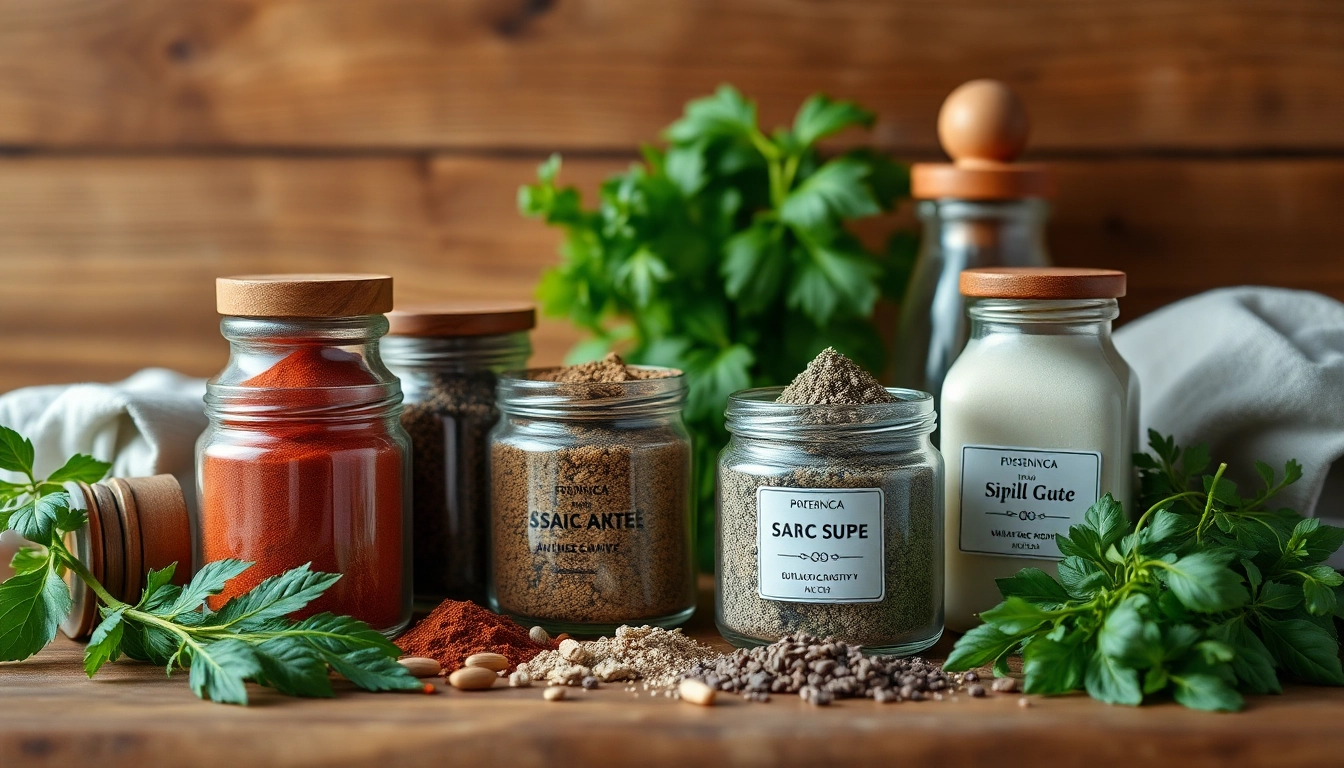Harnessing the Power of Suppliers to Elevate Food Industry Success
In the dynamic landscape of the global food industry, suppliers play a pivotal role in shaping product quality, brand reputation, and market competitiveness. For companies like Spice Nest, becoming a trusted and reliable supplier is not just about delivering authentic and high-quality products; it also involves strategic operations, innovative marketing, and continuous adaptation to market trends. This comprehensive guide explores the essential aspects of becoming and maintaining effective suppliers in the food sector, emphasizing how they can leverage their strengths to enhance visibility, market reach, and long-term success.
To explore further, visit our dedicated Suppliers section to understand how collaboration with reputable manufacturers like Spice Nest can boost your business pipeline and product portfolio.
Understanding the Role of Suppliers in the Food Industry
Key Responsibilities and Expectations from Food Suppliers
Suppliers are the backbone of the food supply chain, with responsibilities that extend beyond mere delivery of products. Their primary duties include sourcing high-quality raw materials, adhering to safety and hygiene standards, maintaining consistent product supply, and ensuring compliance with international and local regulations. For instance, suppliers of spices and processed foods must guarantee purity, freshness, and authenticity to meet rigorous standards set by food safety authorities like FDA and FSSAI.
Modern suppliers are expected to demonstrate transparency through traceability of raw materials, sustainable sourcing practices, and prompt responsiveness to client inquiries and quality issues. Additionally, they often need to handle diverse product categories — from spices powder and whole spices to ready-to-eat foods and dehydrated products — requiring specialized knowledge and certifications. Meeting these expectations elevates a supplier’s reputation and builds lasting trust with manufacturers and retailers.
How Suppliers Influence Product Quality and Brand Perception
Product quality is fundamental to consumer satisfaction and brand loyalty. Suppliers directly impact this quality through their sourcing, processing, and packaging practices. For example, a supplier providing premium, organically certified spices and herbs can influence the overall perception of their client brands as health-conscious and trustworthy. Conversely, lapses in quality control or contamination issues can tarnish brand reputation and lead to costly recalls.
Efficient supply of superior ingredients results in better final products, fostering positive customer reviews and repeat business. Suppliers committed to innovation—such as introducing dehydrated superfoods, gourmet chutneys, or organic oils—set their clients apart in competitive markets, establishing a perception of reliability and excellence.
Building Trust with Manufacturers and Retailers
Trust is cultivated through consistent quality, transparency, and reliable delivery schedules. Successful suppliers invest in quality certifications like ISO, HACCP, and GMP, which reassure buyers of their adherence to stringent standards. Moreover, maintaining an open communication channel and offering value-added services—such as flexible packaging options, technical support, and customized formulations—further solidify partnerships.
Regular audits, prompt resolution of issues, and sharing of industry insights help build credibility. For newer entrants, showcasing participation in major food exhibitions and international trade shows attests to their professionalism and market presence, which are key factors in establishing trust.
Optimizing Supplier Operations for Better Market Penetration
Implementing Quality Control and Standard Certifications
Quality control is the cornerstone of a supplier’s reputation. Integrating advanced testing methods, maintaining strict hygienic conditions, and complying with certifications like ISO 22000 and Organic Certification are essential. For example, Spice Nest’s certification and presence at renowned exhibitions like Biofach 2024 demonstrate their commitment to quality, which instills confidence among global clients.
Developing comprehensive Standard Operating Procedures (SOPs) for sourcing, manufacturing, and packaging ensures consistency. Routine audits and third-party inspections verify ongoing compliance, preventing quality lapses. Additionally, adopting traceability software allows suppliers to track raw materials from origin to delivery, enhancing transparency and accountability.
Leveraging Technology for Supply Chain Efficiency
Modern suppliers optimize their operations through digital tools such as Enterprise Resource Planning (ERP) systems, inventory management software, and real-time tracking solutions. These technologies facilitate accurate forecasting, minimize stockouts, and streamline logistics, enabling faster response times and reduced lead times.
For instance, integrating automated order management helps suppliers promptly align production schedules with demand fluctuations, ensuring timely delivery of spices, pastes, and dehydrated foods. This seamless coordination reduces costs and improves customer satisfaction.
Developing Effective Packaging and Branding Strategies
Impressive packaging not only preserves product freshness but also plays a crucial role in brand identity. Suppliers should invest in attractive, informative, and tamper-proof packaging that highlights product quality, certifications, and usage tips. For example, Spice Nest’s range of packaged strawberry jams in various weights caters to different consumer needs, enhancing versatility and market appeal.
Strong branding, consistent labeling, and clear messaging about product origins and health benefits reinforce consumer trust. Collaborating with vendors who specialize in eco-friendly and innovative packaging solutions can also position a supplier as environmentally responsible, appealing to the growing segment of eco-conscious buyers.
Effective Marketing and Outreach for Food Suppliers
Utilizing Digital Platforms to Showcase Products
Establishing a compelling digital presence is vital for expanding market reach. A professionally curated website, like Spice Nest, provides a comprehensive showcase of product lines—spices, pastes, pickles, dehydrated foods, and more—complete with certifications, catalogues, and client testimonials. Leveraging SEO strategies ensures visibility to global buyers searching for authentic food ingredients.
Social media channels, webinars, and virtual tastings serve as engaging tools to build brand awareness and interact directly with potential partners. Posting success stories, participation in trade shows, and new product launches fosters community trust and positions suppliers as industry leaders.
Participating in Food Expos and Trade Shows
Trade shows like Biofach 2024 and other international food expos are critical venues for networking with buyers, demonstrating product quality, and identifying market trends. Exhibiting at such events provides opportunities for live demos, tasting sessions, and face-to-face negotiations, which are often more impactful than digital outreach alone.
Preparing eye-catching booths, offering samples, and gathering leads for follow-up are strategic practices that maximize ROI from these events. Spice Nest’s successful showcase at Biofach exemplifies how participation elevates brand stature and opens international distribution channels.
Establishing Strong B2B Relationships and Networks
Building lasting relationships requires consistent engagement, personalized communication, and value-added support. Developing a dedicated sales and customer service team ensures prompt responses and tailored solutions for large retailers, distributors, and foodservice providers.
Joining industry associations, collaborating with certified distributors, and maintaining active participation in global forums enhance credibility. Leveraging these networks facilitates access to new markets and keeps suppliers ahead of emerging consumer demands.
Aligning with Market Trends to Boost Sales
Focusing on Organic, Natural, and Healthy Food Trends
The rise of health-conscious consumers is driving demand for organic, natural, and minimally processed foods. Suppliers that prioritize organic certifications, non-GMO ingredients, and clean-label practices position themselves favorably in this niche. For instance, offering organic herbs, dehydrated superfoods, and preservative-free jams aligns with current market preferences.
Innovating Product Offerings to Meet Consumer Preferences
Innovation is key to staying competitive. Incorporating international flavors, ready-to-eat formats, and functional ingredients caters to busy lifestyles and health trends. Examples include ready-to-eat gravies, spicy chutneys, and health-boosting turmeric powders.
Adapting to International Export Regulations and Standards
Compliance with global standards such as HACCP, ISO, and various organic certifications facilitates smooth export processes. Understanding regional regulations, labeling requirements, and quality standards allows suppliers to effectively penetrate international markets. Spice Nest’s active presence at world-renowned exhibitions exemplifies adherence to these regulations, opening doors to global partnerships.
Measuring Success and Driving Continuous Improvement
Tracking Supply Chain Performance Metrics
Implementing KPIs such as order fulfillment rate, defect rate, lead time, and customer satisfaction scores provides insights into supply chain efficiency. Regular analysis helps identify bottlenecks and areas for process improvements. For example, monitoring the delivery time of dehydrated foods ensures timely market penetration.
Gathering Feedback from Clients and End-Users
Customer feedback reveals product acceptance, quality perceptions, and areas needing innovation. Conducting surveys, reviews, and direct conversations with clients enables suppliers to refine offerings and address unmet needs.
Implementing Improvements Based on Market Analysis
Data-driven decision-making leads to strategic product development, packaging upgrades, and enhanced service delivery. Staying aligned with evolving consumer preferences—such as organic and organic superfoods—ensures sustained growth and market relevance.

